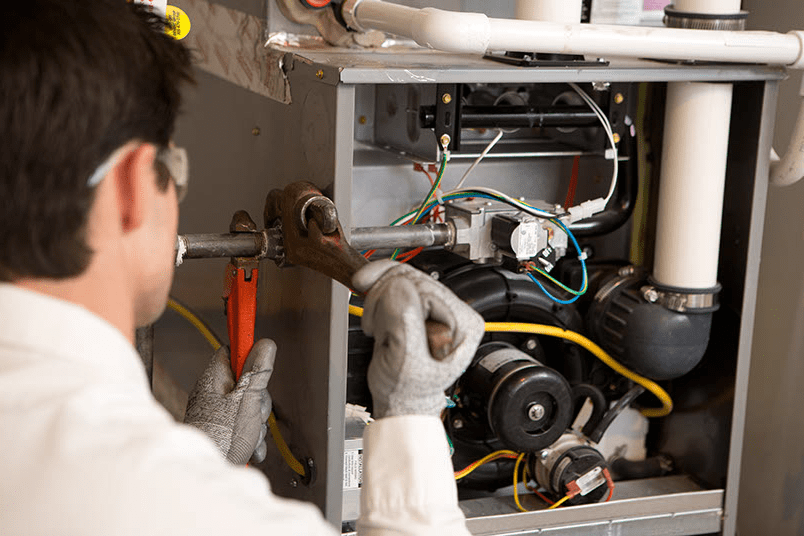An Ounce of Prevention is Better Than a Pound of Furnace Repair Cures!
As winter arrives, people find comfort in their warm homes, especially those with high-efficiency furnaces. These furnaces are energy-efficient and eco-friendly, operating at 90-98% efficiency. But to keep them working well, proper maintenance is essential. High-efficiency furnaces are fantastic additions to any home. They make your home warm during winter seasons while also being energy-efficient. However, to keep them running at their best, regular maintenance is crucial. Here are the essential steps you need to take:
Regular Filter Changes
Keeping your high-efficiency furnace working well is easier than you might think, and it starts with changing the air filter regularly. This filter is like a shield, stopping tiny particles like dust and pet dander from getting inside your furnace and spreading through your home. Imagine it as a net catching all the stuff you don't want in your air. As time goes on, this filter gets filled up with all the things it catches, making it harder for air to flow through. When that happens, your furnace has to work extra hard to keep your home warm, using more energy and sometimes getting too hot.
To avoid this, all you need to do is change the filter every one to three months, especially if you have pets, smokers, or someone with allergies at home. This small task makes a big difference. A fresh filter means your furnace can breathe easily, working efficiently to keep your home warm without using too much energy. It's like giving your furnace a breath of fresh air. Plus, when your furnace doesn't have to struggle, it lasts longer, saving you money on repairs. So, don't forget this simple job – it keeps your indoor air clean, your furnace happy, and your home cozy.
Condensate Drainage System
Maintaining a drainage system in your high-efficiency furnace is really important. These special furnaces create water as they heat your home, and this water needs to go away properly. If it doesn't, it can cause big problems like damaging your furnace or even your house. The drainage lines in your furnace can get blocked by dirt or other stuff over time. When this happens, water can't flow out, and that's when trouble starts.
Checking and cleaning the drainage system is quite easy. First, find the drain line, which is usually a pipe connected to your furnace. Look for any blocks or clogs in the pipe. If you see any, you can use a vacuum or a pipe cleaner to clear them out gently. Also, make sure the pipe slopes down and away from your furnace. This slope helps the water to flow out smoothly, preventing any backups. By keeping the drainage system clear and in the right slope, you make sure your furnace stays safe and works well, making your home warm and cozy without any problems.

Professional Annual Inspection
Getting your high-efficiency furnace checked by a professional once a year is really important. These experts know all the ins and outs of your furnace and can find problems that you might not notice. During this yearly check, they look closely at important parts like the heat exchanger, blower motor, ignition system, and safety controls. They also check the electrical connections, gas lines, and how well the whole system works.
These yearly checks aren't just for fixing what's wrong now; they help prevent future problems too. The technician cleans and lubricates the important parts so they work well. They also make adjustments to make sure your furnace uses energy efficiently. Plus, these check-ups are a chance to replace old parts before they cause big issues. This way, you won't suddenly be without heat, and you won't have to spend lots of money on big repairs. So, by having this yearly inspection, you should have maintenance of your furnace – you're making sure your home stays warm, cozy, and worry-free for your family, year after year.
Combustion Analysis
Checking the combustion analysis is super important for your high-efficiency furnace. Here's why: when your furnace burns fuel to make heat, it creates gases. These gases need to be just right, not too much or too little, for your furnace to work well. If something's off, it can make your furnace less efficient and even release dangerous gases like carbon monoxide.
A technician comes in and checks these gases during the analysis. They look at the levels of oxygen, carbon dioxide, and other gases coming out of your furnace. By comparing these levels with what's safe, they can tell if your furnace is in good shape or if there's a problem. If something's not right, they can adjust your furnace to make it work better. This not only saves energy but also makes sure your furnace is safe. You don't want any harmful gases leaking into your home!
Think of it like a health check for your furnace. Just like you go to the doctor to stay healthy, your furnace needs a checkup too. It's not just about making it work well; it's about keeping your home warm and your family safe. So, by having this analysis done, you're not just maintaining your furnace; you're taking care of your home and the people you love.
Venting System Inspection
Inspecting the venting system is really important to maintain your high-efficiency furnace. Your furnace produces gases when it heats your home. These gases need to go outside, so your home stays safe. That's where the venting system comes in. It's like a special path for these gases to leave your house.
During the inspection, a technician will look at the pipes and connections that make up this system. They want to make sure everything is clear and not broken. If something blocks this system, the gases can stay inside, and that's dangerous. The technician will also check if the pipes have any cracks or holes because these can stop the system from working right. If they find any problems, they'll fix them. This way, your home stays safe, and you can feel secure, knowing your furnace is working well.
Addressing Unusual Noises or Odors
Taking care of unusual noises or odd smells is really important when it comes to looking after your high-efficiency furnace. Normally, your furnace works quietly. So, if you start hearing strange sounds like banging or rattling, or you notice weird smells, especially a strong gas smell, that's a sign something might be wrong. Ignoring these signs could lead to bigger problems, so it's crucial to deal with them quickly.
These odd noises could be because of loose parts or issues with the blower or ignition. A technician will listen carefully to these sounds to figure out where they're coming from. They'll also check for any strange smells, especially gas leaks, which are dangerous. If they find a problem, they'll fix it. This way, your furnace will work quietly and safely. Regular maintenance not only stops these issues but also gives you peace of mind. You'll know your furnace is dependable, quiet, and, most importantly, it keeps your home warm and cozy without any worries.
Conclusion:
In the end, looking after your high-efficiency furnace means more than just keeping your home warm. It's a way to protect your home, your family, and your peace of mind. By doing simple things like changing the air filter, checking the venting system, and addressing any strange noises or smells, you're not just making your furnace last longer. You're making sure it works well and keeps everyone safe.
Regular maintenance is like giving your furnace the love it deserves. It means it will work quietly, use less energy, and keep your home comfy. It might seem like a small thing, but it makes a big difference. It saves energy, stops you from spending a lot on repairs, and most importantly, keeps your family safe. So, maintain your high-efficiency furnace. It's an investment in your home and the people you care about. Stay warm, stay safe, and enjoy your cozy home all year long.




















